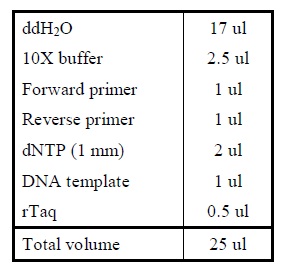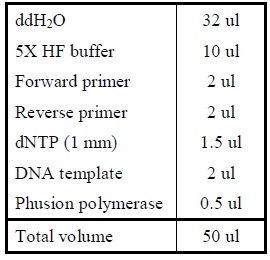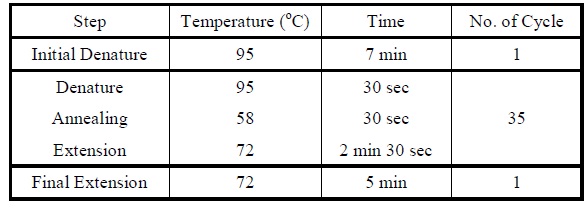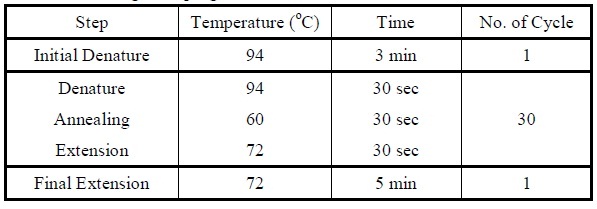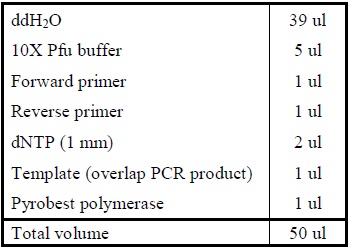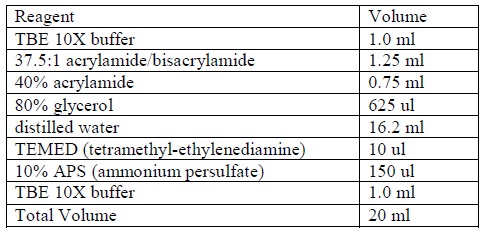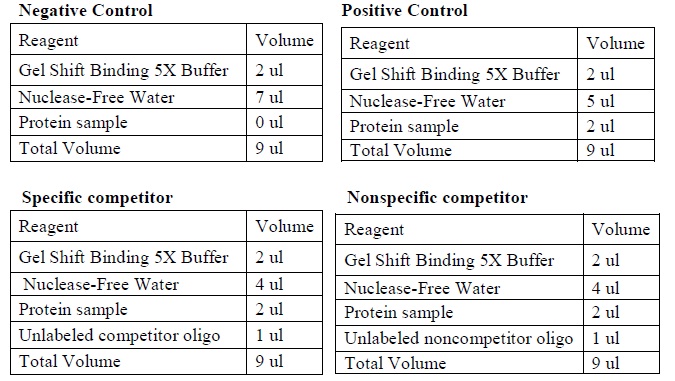Team:HKU-Hong Kong/Lab Protocol
From 2011.igem.org
| Line 415: | Line 415: | ||
{| style="width:900px;background:#000000;text-align:justify;font-family: georgia, helvetica, arial, sans-serif;color:#ffffff;margin-top:25px;" cellspacing="20" | {| style="width:900px;background:#000000;text-align:justify;font-family: georgia, helvetica, arial, sans-serif;color:#ffffff;margin-top:25px;" cellspacing="20" | ||
|style="width:900px;"| | |style="width:900px;"| | ||
| - | |||
2. Incubate the reactions at room temperature for 10 minutes. | 2. Incubate the reactions at room temperature for 10 minutes. | ||
| Line 435: | Line 434: | ||
4. Maintain the gel temperature under 30oC. | 4. Maintain the gel temperature under 30oC. | ||
| - | <LI>Protocol adopt from: http://www.promega.com/~/media/Files/Resources/Protocols/Technical%20Bulletins/0/Gel%20Shift%20Assay%20Systems.ashx | + | <LI>Protocol adopt from: |
| + | http://www.promega.com/~/media/Files/Resources/Protocols/Technical%20Bulletins/0/Gel%20Shift%20Assay%20Systems.ashx | ||
Revision as of 02:23, 5 October 2011
| Lab Protocol |
| A. DNA WORK |
| Agarose Gel Electrophoresis |
|
| DNA Extraction from Agarose Gel |
|
| DNA Digestion |
|
1. Add the following reagents, with the enzymes added at the last, into a tube |
|
2. All steps should be carried out on ice. 3. Mix well after addition of all the reagent. 4. Incubate the mixture at 37oC for several hours. |
| Miniprep(Adopt from Qiagen) |
|
| Polymerase Chain Reaction |
|
Colony PCR 1. Add the following reagents into a PCR tube (in order) and mix well. |
|
2. Set the following PCR program. |
|
1. Add the following reagents into a PCR tube (in order) and mix well. |
|
2. Set the following PCR program. |
|
Overlap PCR 1. First, two PCR reactions are set for amplifying the two genes, tetR and HNS, separately. 2. Add the following reagents into a PCR tube (in order) and mix well.</LI> |
|
3. Set the following PCR program. |
|
4. Set up another PCR reaction using a primer with a linker to link the two genes. 5. Add the following reagents into a PCR tube (in order) and mix well. |
|
6. Set the following PCR program. |
|
7. Set up another PCR reaction to further amplify the fused product. 8. Add the following reagents into a PCR tube (in order) and mix well. |
|
9. Set the following PCR program. |
|
|
| DNA ligation |
|
1. Add the following reagents, with the enzymes added at the last, into a tube. |
|
2. Incubate at 16oC overnight.</LI> |
| Sequencing |
|
| B. BACTERIAL WORK |
| Overnight culture |
|
| Preparation of competent cell |
|
| Spread plate |
|
| Streak plate |
|
| Transformation |
|
| C. Preparation of materials |
| Preparation of ampicillin |
|
| Preparation of LB agar plate |
|
| Preparation of LB broth |
|
| Preparation of 1X TAE buffer |
|
| D. Protein Work |
| Gel Shift Assays (Adopt from Promega) |
|
i. Gel Preparation 1. Clean all the glassware by distilled water (ions-free). 2. Prepare a non-denaturing 4% acrylamide gel according to the following formula: |
|
3. Allow the gel to stand until the gel is completely polymerized. ii. DNA Binding Reactions 1. Set up four binding reactions (if necessary) with the following composition. |
|
2. Incubate the reactions at room temperature for 10 minutes. 3. Add 1 ul of labeled DNA sample to each reaction. 4. Incubate the reactions at room temperature for 20 minutes. 5. Add 1 ul of 10X loading buffer for each reaction.
1. Pre-run the gel in 0.5X TBE buffer for 10 minutes at 350V. 2. Load the sample. 3. Run the gel at 350V until the loading dye reached three fourth of the gel. 4. Maintain the gel temperature under 30oC. |
 "
"




